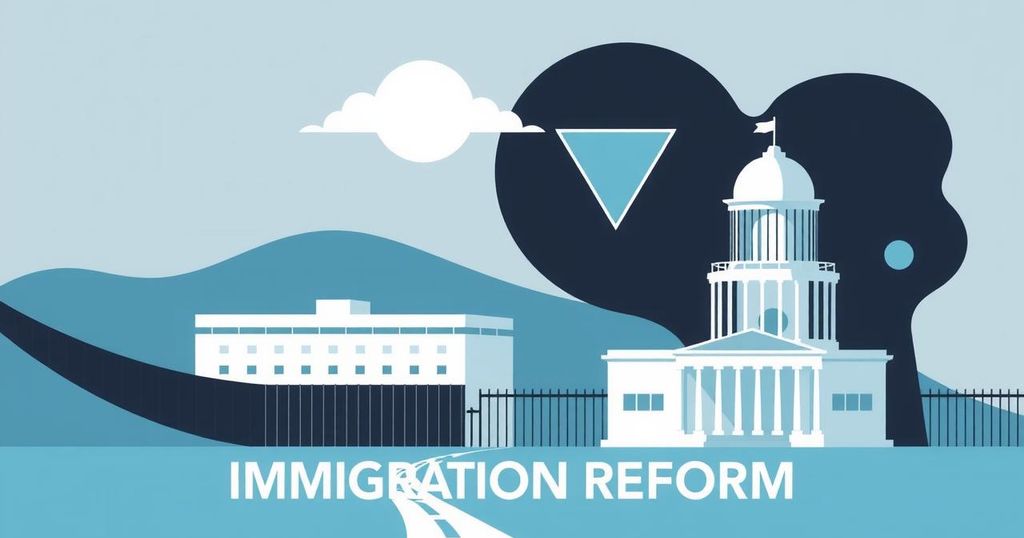How Trump’s New Immigration Bill Could Impact the System
In a significant push for change, President Donald Trump’s proposed immigration bill seeks to infuse the U.S. system with around $150 billion, targeting mass deportation and border security. This hefty proposal aims to significantly reshape immigration practices, from the construction of new border walls to the expansion of detention facilities. As the Senate debates its version of the bill, many fear the potential implications for immigrants and asylum seekers alike, especially considering rising costs and stricter enforcement measures that could complicate legal immigration pathways.
Overview of Trump’s Ambitious Immigration Legislation
When it comes to reshaping immigration policies in the U.S., President Donald Trump’s significant spending proposal certainly makes headlines. This bill, touted to inject around $150 billion into various aspects of immigration enforcement, could have profound and lasting effects on how the U.S. manages its borders and immigration processes. With proposed budget allocations ranging from wall construction to detention facilities, the aim appears crystal clear: reinforce and expand immigration enforcement while significantly altering the landscape for those seeking to enter or remain in the U.S. For many, this sparks concerns about future immigration paths and the treatment of those already within the system.
Border Security and Wall Funding
To begin with, nearly half of the funding, a staggering $46.5 billion, is earmarked for building and enhancing the extensive border wall. According to the House Homeland Security Committee, this “integrated border barrier system” would not only cover the actual wall but also involve technology and roads to ensure better surveillance and access. The proposed construction includes 701 miles of primary walls and almost 900 miles of barriers along the U.S.-Mexico border. While many politicians argue this increases security,—including Rep. Mark Green—there are mixed feelings about whether the budget truly represents a practical solution or simply a political gesture.
Expansion of Detention Facilities
Then, there’s the plan for expanding detention facilities, with a hefty $45 billion assigned to increase the capacity for both adult migrants and families. As outlined, the Secretary of Homeland Security will set the standards for adult facilities, which raises eyebrows about oversight and regulations. Coupled with requests for 18,000 additional ICE and Border Patrol personnel, the proposal reflects a dramatic shift toward a model that facilitates quicker deportations. Critics argue that it appears the administration has prioritized immediate enforcement over long-term, meaningful reform, reminiscent of Amazon’s delivery model, aiming for efficiency, but potentially problematic in its execution.
Reforming the Immigration Court System
On the topic of immigration courts, the legislation provides for $1.25 billion towards hiring additional judges and support staff—much-needed resources considering the courts are virtually drowning under a backlog of over 3.6 million cases. Currently stretched thin, this system struggles with chronic understaffing, where judges often can’t manage to keep up, resulting in cases that seem to drag on indefinitely. While the funding is dubbed a significant increase by officials, many in the legal community are sceptical, suggesting that without addressing the surrounding issues, the funding may merely serve to facilitate short-term efficiencies rather than addressing deeper systemic flaws or improving access for immigrants in desperate need of legal representation.
Significant Increases in Immigration Fees
Finally, the proposed immigration reforms include staggering increases in application fees, with a complete overhaul of the cost landscape. Asylum applications, previously free, could soon cost $1,000. The potential rise in fees, some by as much as 1,700% for certain processes, raises serious concerns regarding accessibility for those most in need of protection. For those with limited resources, even the price of applying for temporary protected status seems insurmountable. This initiation of new fees might serve as another barrier, significantly hindering many seeking the safety and opportunity the U.S. offers, effectively altering the very nature of who can afford to immigrate or seek refuge here.
How much funding does Trump’s bill propose?
President Trump’s proposed immigration bill intends to allocate approximately $150 billion in funding for multiple areas related to immigration enforcement, including border security and detention centers.
What portion of the bill is dedicated to building the wall?
The legislation plans to set aside $46.5 billion specifically for construction and maintenance of border walls, touted as an essential component of Trump’s immigration agenda.
Are there changes to immigration fees in the bill?
The proposed immigration bill is expected to significantly increase the fees for various immigration processes, including an application for asylum which could rise to $1,000, affecting accessibility for many.
What does the bill propose for immigration courts?
There’s intent to boost the number of immigration judges and support staff to help reduce the backlog of immigration cases, which currently stands at over 3.6 million.
Will the proposed bill effectively solve existing problems in the immigration system?
While it promises an increase in resources, critics warn these measures may not adequately address systemic issues and could worsen the situation for many immigrants currently in the system.




